MHS8.431 Nutrition: Public Health Intervention for Adult Obesity
VerifiedAdded on 2023/06/11
|25
|2936
|319
Presentation
AI Summary
This presentation provides a detailed analysis of obesity among the adult population in New Zealand and proposes a nutrition awareness campaign as a public health intervention. It highlights the prevalence of obesity in New Zealand, ranking it as the third fattest nation globally, and emphasizes the urgent need for intervention due to the associated health risks such as diabetes, heart attack, and stroke. The proposed campaign targets individuals, families, and communities, focusing on educating the public about the dangers of unhealthy diets, the importance of balanced nutrition, and the benefits of adopting a healthy eating culture. The presentation outlines the roles of various stakeholders, including the government, Ministry of Health, healthcare professionals, and community health workers, in implementing and evaluating the program. It also addresses potential organizational and individual barriers to the campaign's success and suggests remedial measures to overcome these challenges. The success of the program will be monitored through continuous assessment and a final evaluation to ensure that the outlined goals are achieved. This presentation also includes a success history of the campaign program. The presentation concludes by reiterating the importance of proper implementation and behavior change to mitigate obesity and improve public health in New Zealand.
1 out of 25
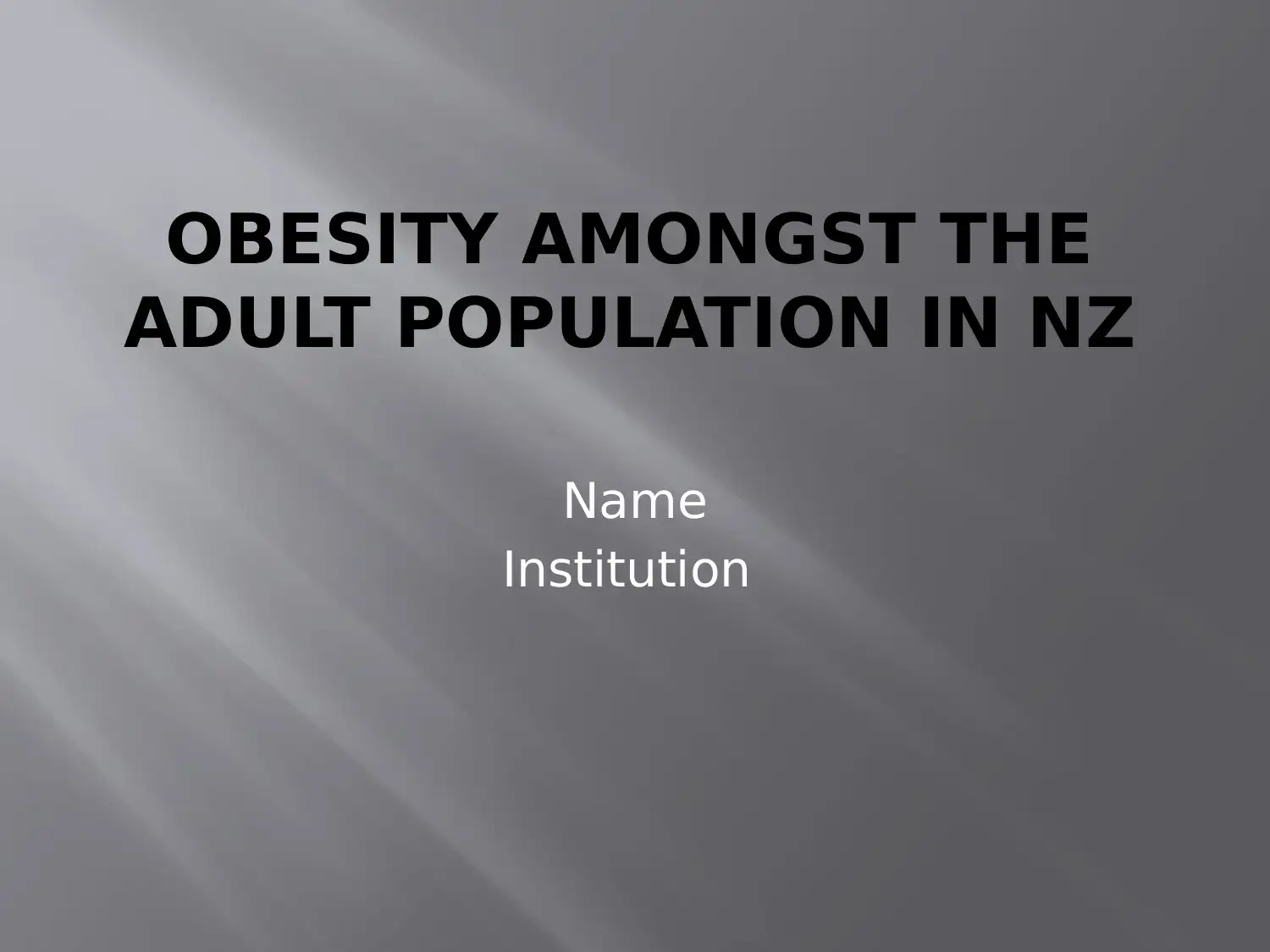
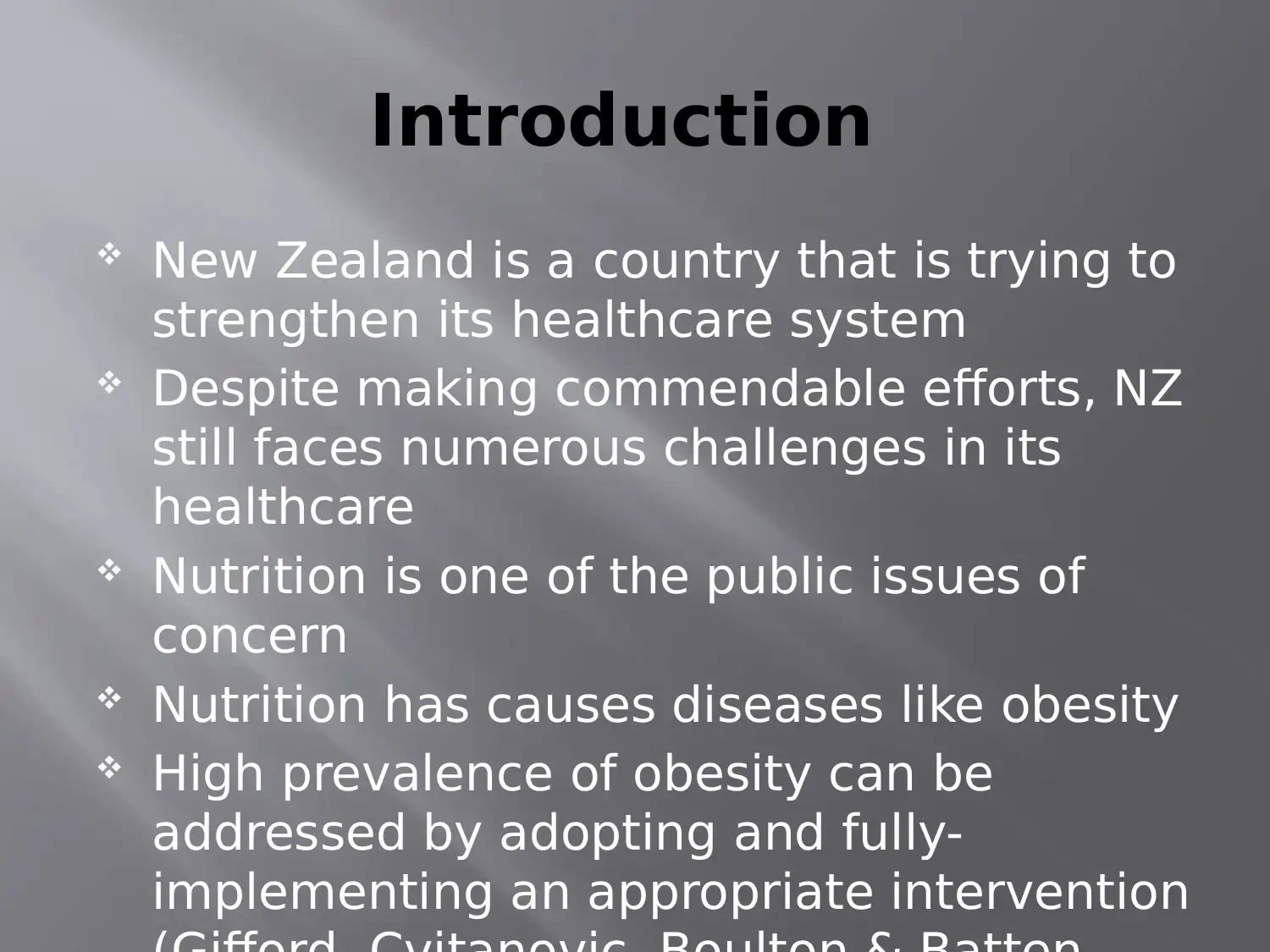
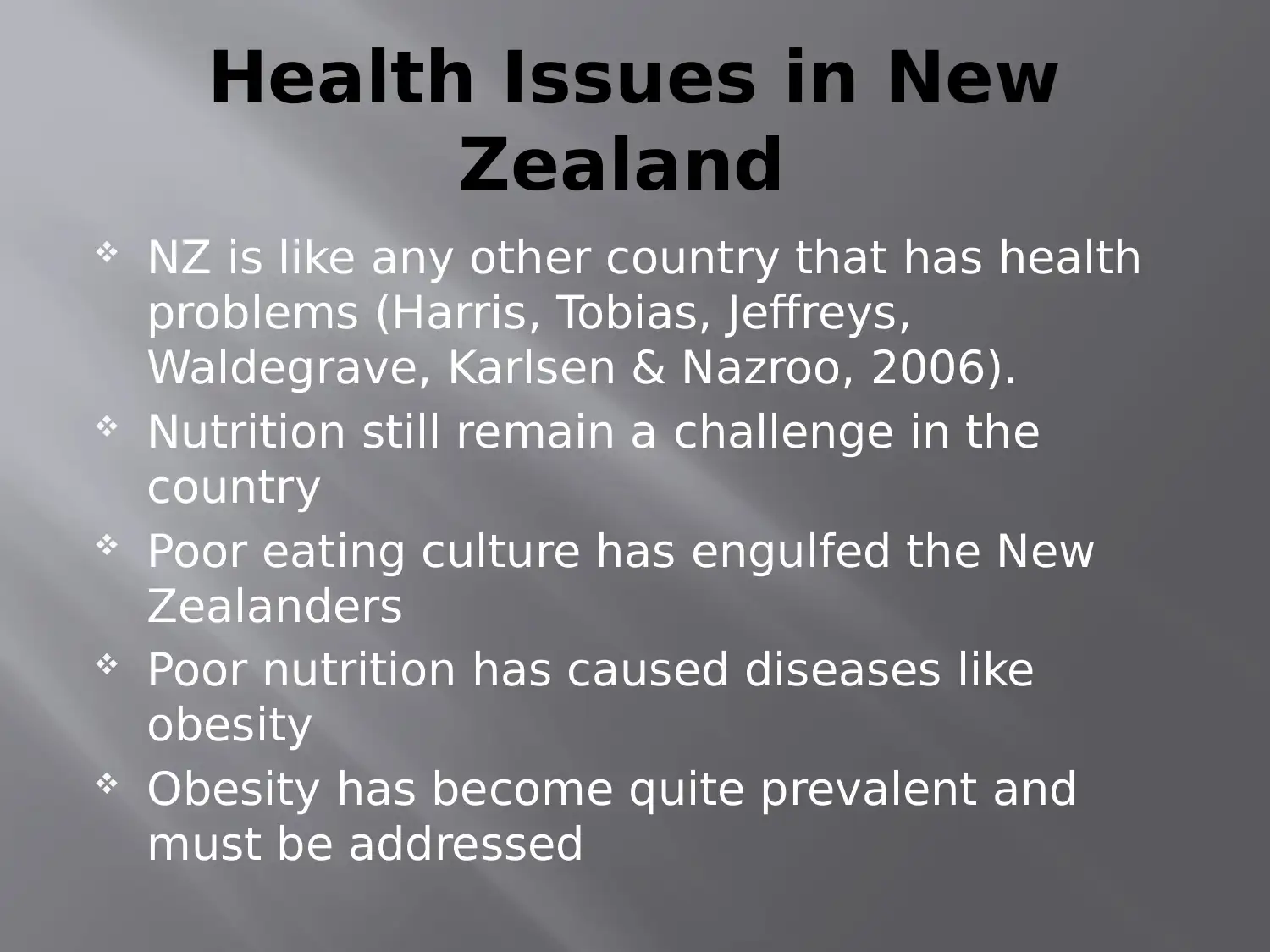

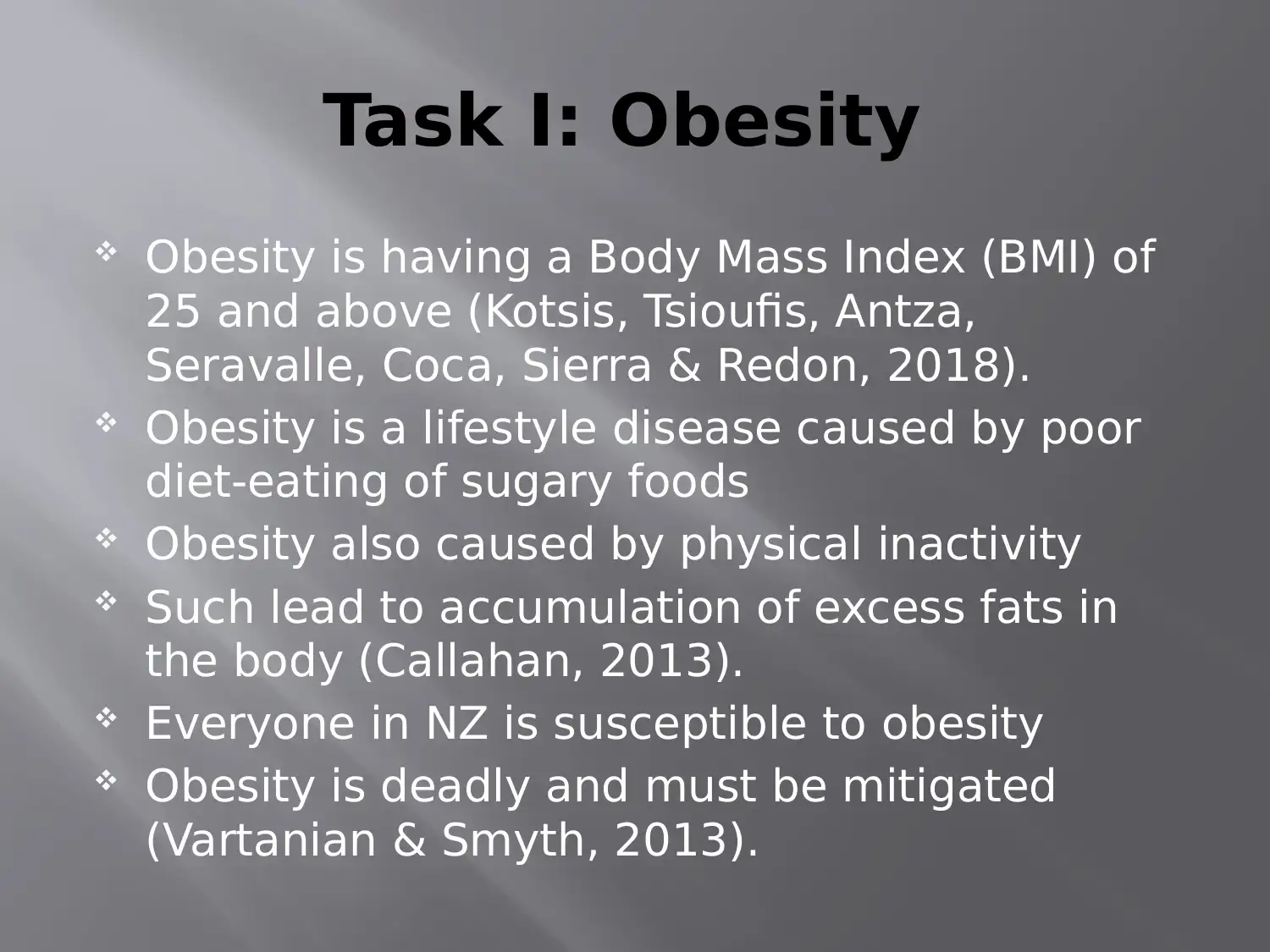

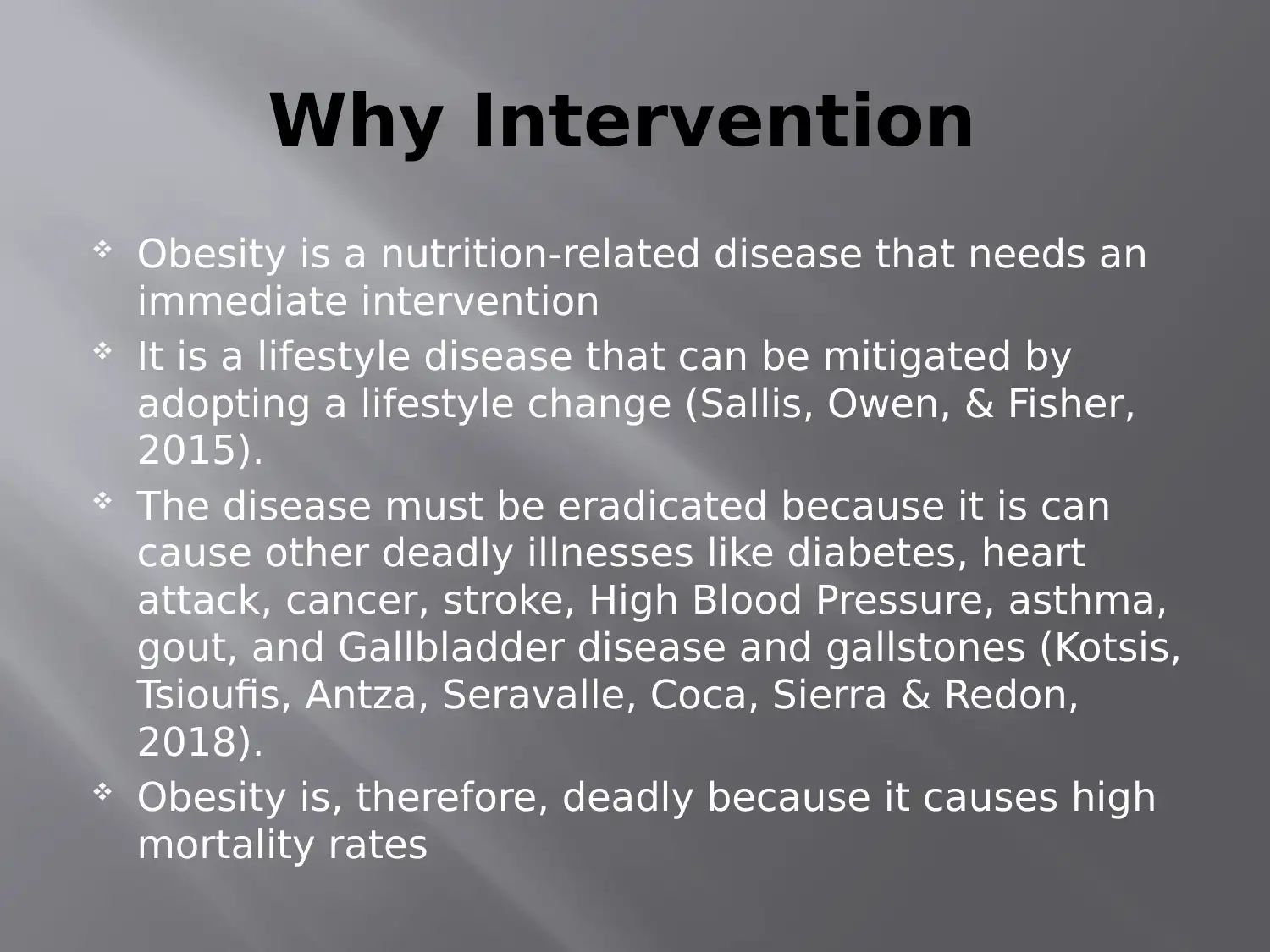
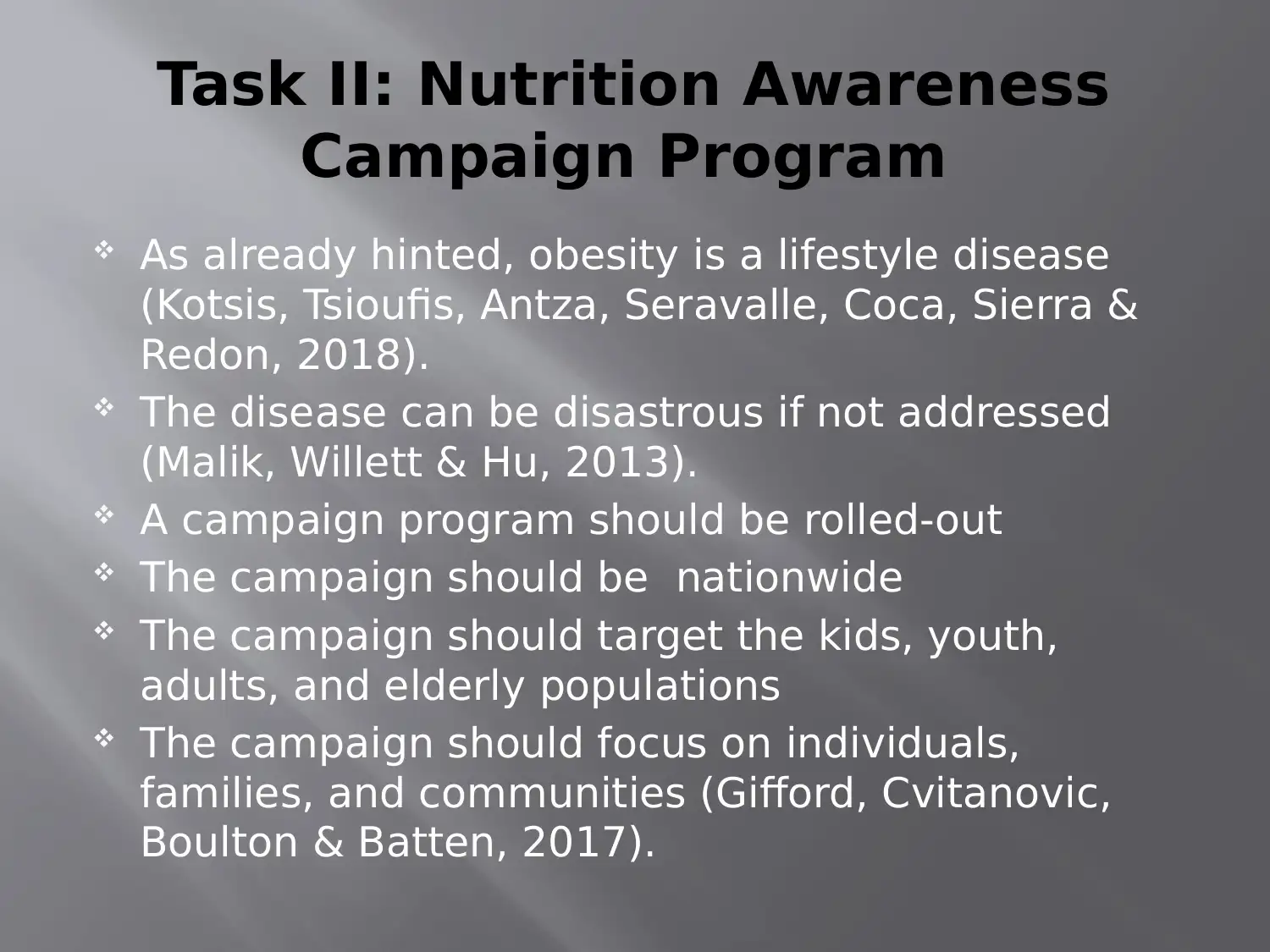
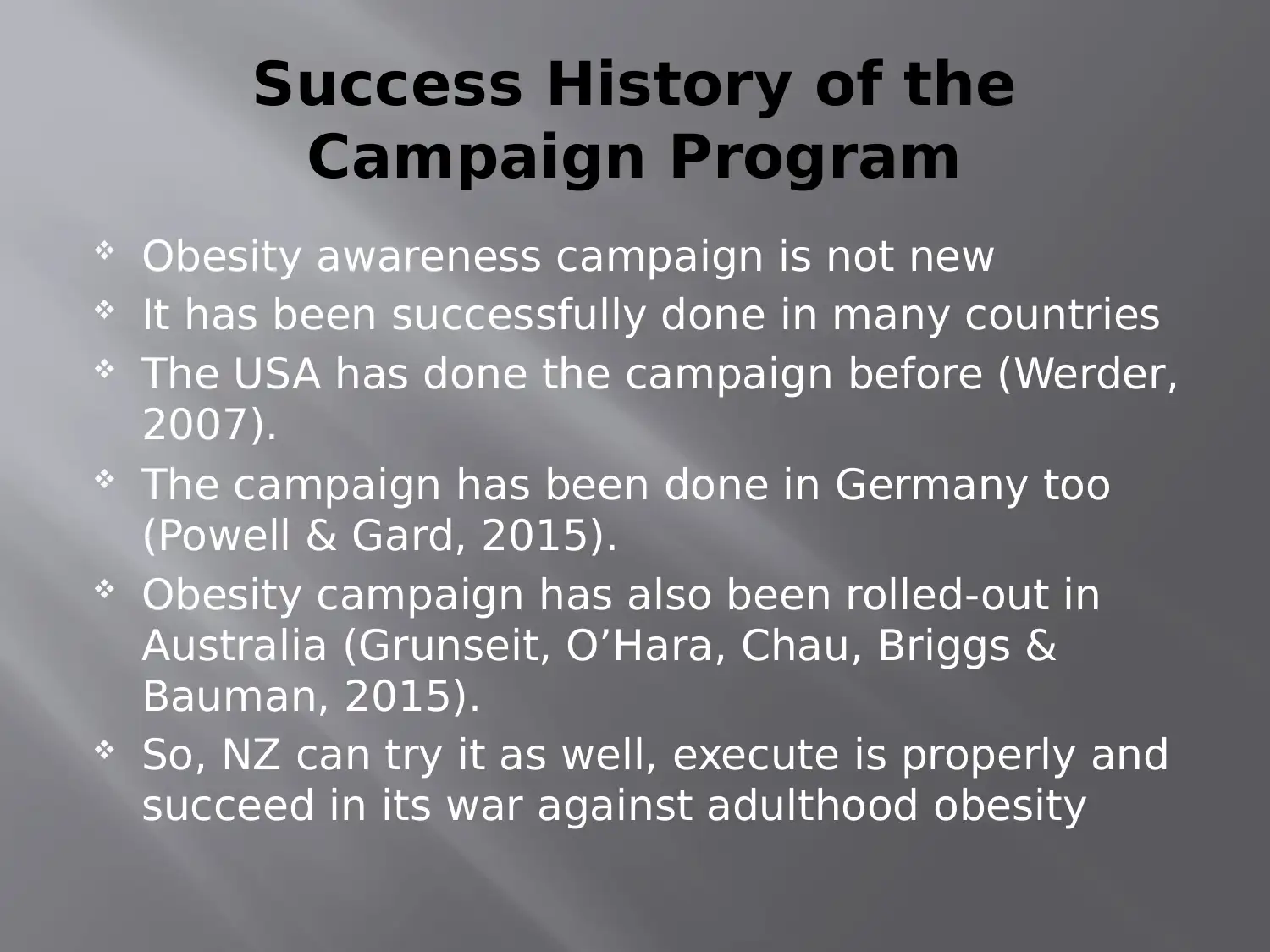

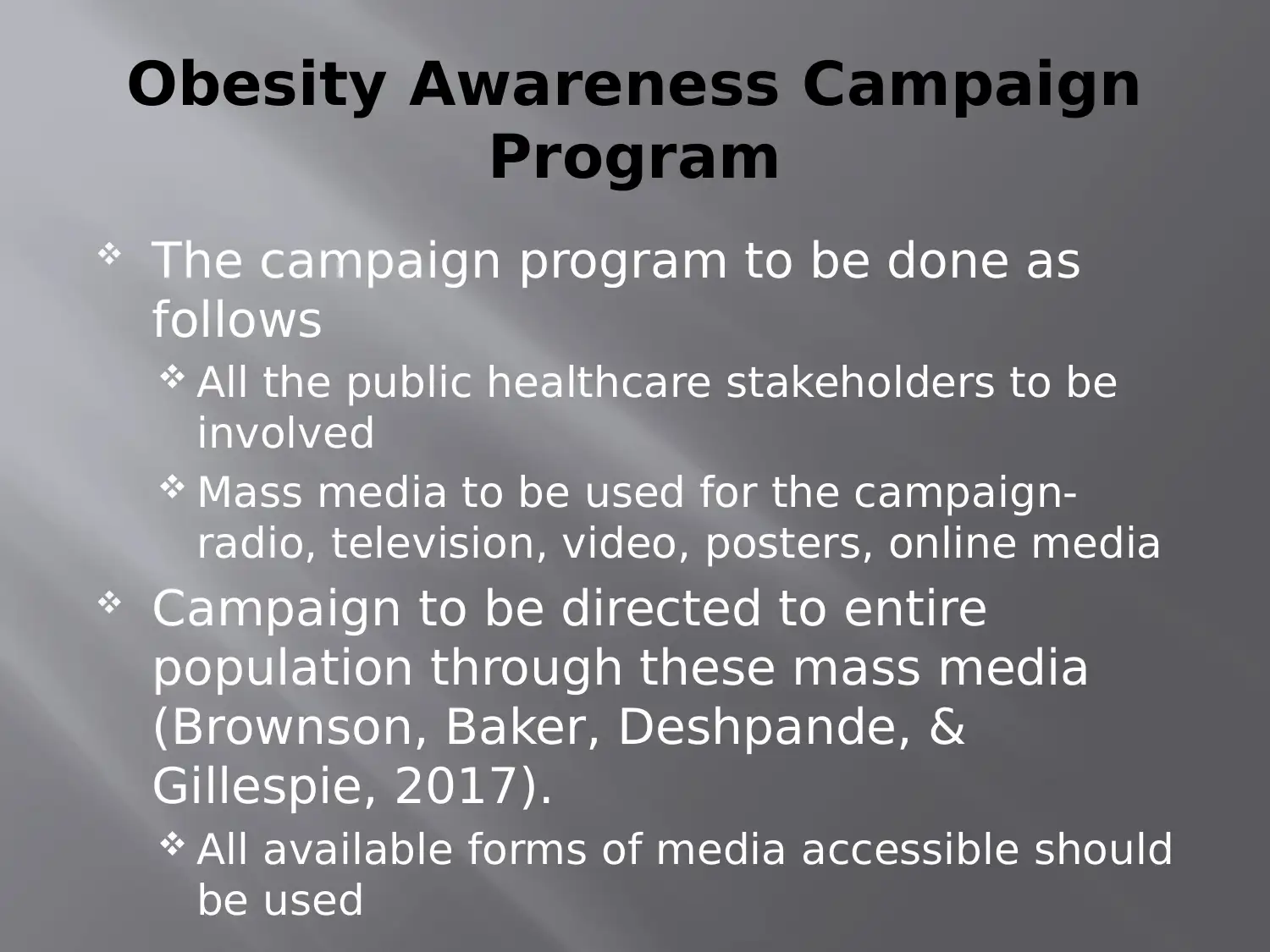
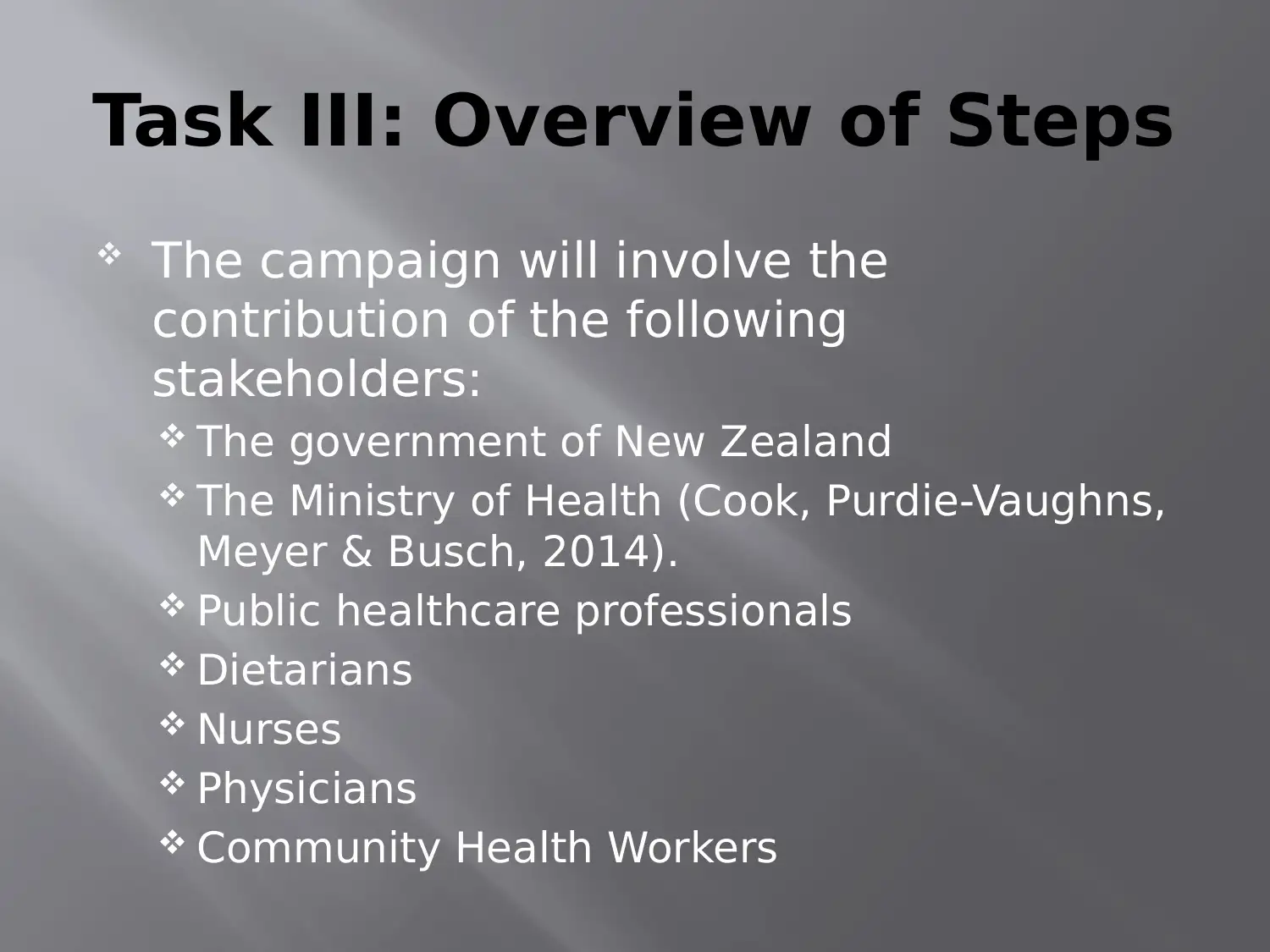
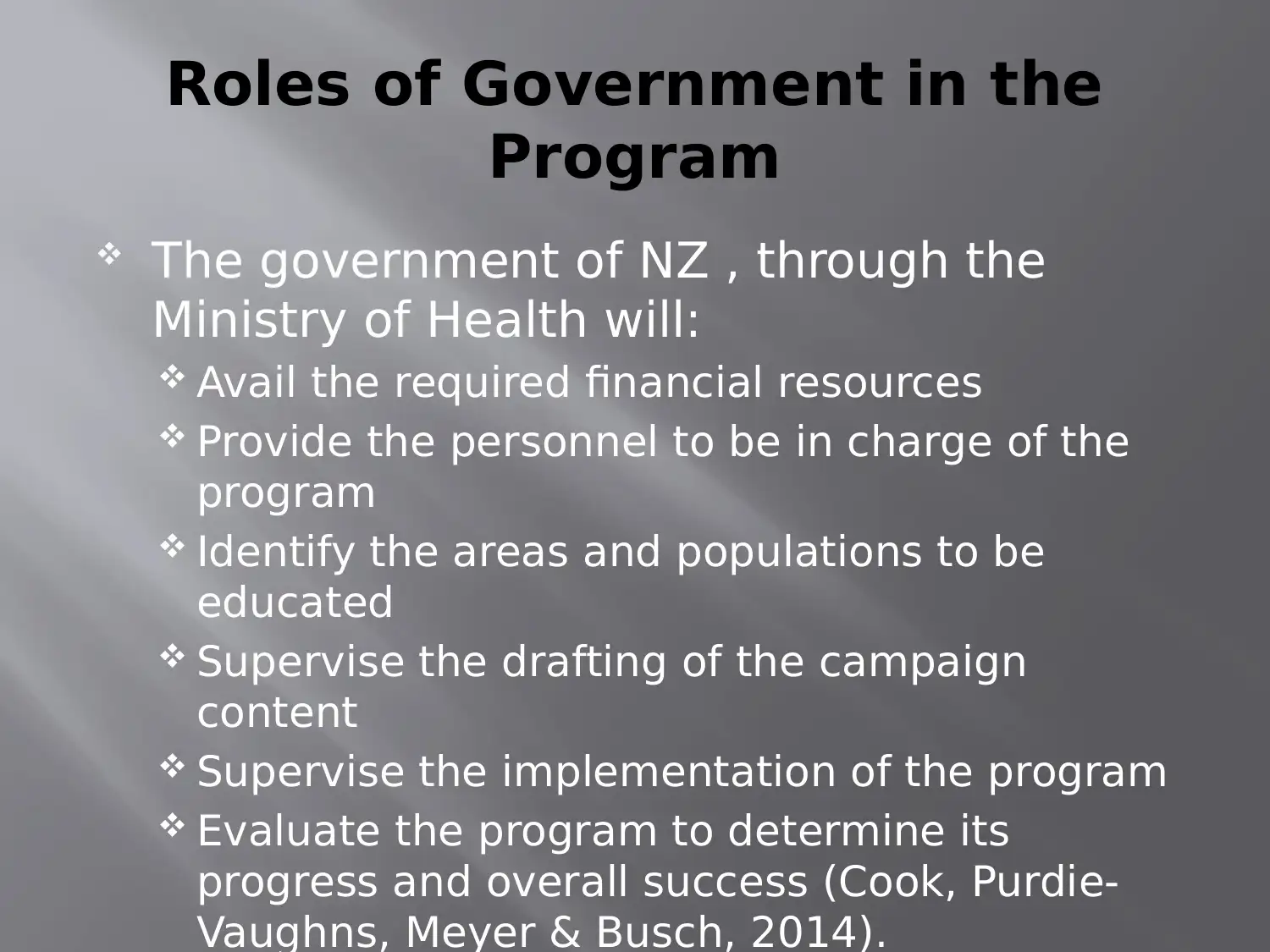





![[object Object]](/_next/static/media/star-bottom.7253800d.svg)